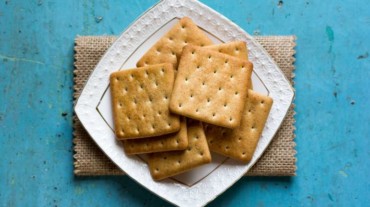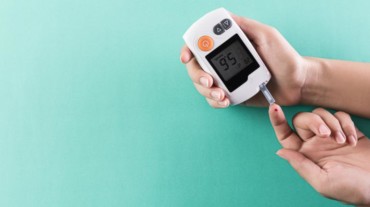
With increasing awareness of health implications due to high sugar intake, efforts are taken by many to eliminate sugary diets to minimize their impact as much as possible. While this practice is more popular among those who have obesity, diabetes, or other metabolic disorders, a growing number of people also take interest in adopting proactive measures to prevent bad health outcomes provoked by high sugar consumption. If you belong to either of these groups, you might be doing your best to reduce sugar intake.
You may be doing this by staying away from sugar by adding it less to your tea or coffee, you might have cut down your intake of soft drinks over the years, or you might be saying no to your favorite cakes and desserts. All of this counts in reducing sugar intake. But do you still leave your grocery store with a bag full of bottled and packaged foods? If yes, you might be eating a lot more sugar than you think.

Many of us are unaware that certain foods that we choose over sugary products secretly contain loads of sugar – even in the ones that do not taste sweet.
Sugar is added to almost all processed foods like soft drinks, bread, cornflakes, fast foods, all sweet treats, and even in salty chips and crackers during the time of manufacturing. Added sugars are different from naturally found sugar present in fruits, vegetables, and milk.
Several recipes combine sweet and savory ingredients to elevate the taste and enhance the flavor of a dish. Savory foods give out salty or spicy flavors and normally do not taste sweet. But unfortunately, this does not mean that the processed savory foods that we have around us are free from sugars. The unseen danger is that they contain great amounts of sugar, and we consider them to be healthy just because it does not have a sweet taste.
Although sugar provides no nutritional benefits, it is added to many foods even the savoury kind for a variety of reasons ranging from balancing out the flavour of salt and spices, enhancing palatability, and being used as a preservative. There are several processed foods that we consume regularly which contain excessive amounts of added sugar but since they are savory in nature, the presence of sugar goes unnoticed.
The most popular kinds that fall into this category are your condiments such as ketchup, barbeque sauce, red chilli sauce, salad dressings, sandwich spreads, pizza, and pasta sauces, packaged soups, salty snacks, biscuits, crackers, namkeens and a lot of other baked and packaged goods.

According to National Health Service, UK, food products containing more than 22.5 grams of total sugar per 100 grams are considered as having a high level of sugar and anything below 5 grams is said to have a low content. Ketchup contains a high amount of sugar besides tomatoes of course. It has 22.8 grams of sugar present in various forms. A 2-tablespoon serving or 25 grams of barbeque sauce can contain 7.1 grams of sugar. A packaged chicken soup can have 21.7 grams of total sugar. Some brands of salad dressings can have as much as 38 grams of sugar.
That is exceedingly high sugar for a food that is not meant to be sweet.
While all these are add-ons and supplementary to the main meal, if you go overboard with the serving limit or quantity, you add up to your daily sugar intake without even realizing that these foods can impact your body just like how the obvious sugary foods do.
It is a well-known fact that sugar is a major contributor to many diseases like type 2 diabetes, obesity, fatty liver disease, and cardiovascular disease. Regular consumption of added sweeteners such as sucrose and high fructose corn syrup (HFCS) create problems by inducing insulin resistance, liver fat, and visceral fat accumulation. Increased sugar intake also causes harm by disrupting the appetite-regulating hormones and reward centres in your brain, to promote overeating.
Select Topics of your interest and let us customize your feed.
PERSONALISE NOWWhat do the experts say about sugar intake?
The consensus dietary guidelines for Indians recommend reducing sugar consumption to less than 10 percent of total calories but experts believe this limit needs to be further decreased to combat the growing burden of metabolic diseases.
The World Health Organization (WHO) recommends keeping sugar intake to less than 10 percent of calories and a further reduction of 5 percent of total calorie intake (25 grams), is advised to address the rising rates of obesity and overweight.
If you are planning to cut down on sugar, knowing the sources of it can help you stay well below the daily limit. If you have diabetes or insulin resistance, restricting carbohydrate intake to non-starchy vegetables and low-glycemic load fruits and avoiding sugar intake of any form is highly advised. As an alternative, switching to naturally derived plant-based sweeteners will help you satisfy your sweet tooth.
Also Read: It’s time to STOP eating these 10 foods with hidden sugar content

Sugar sneaks into our foods in various ways. But you can outsmart them by learning to decipher product labels on packaged foods. Very rarely do we skim through the food labels to check what we’re getting into. Food companies hide sugar in various forms and under very unfamiliar names. There are over 60 different names for sugar. It is important to pay attention to the ingredients list, nutrition facts label and health claims on all products before making a purchase. That’s how you can reduce sugar intake.
Instead of obvious names like “white sugar” or ‘refined sugar”, other forms of it can be found in packaged foods. Look for names like raw sugar, cane sugar, brown sugar, icing sugar, invert sugar, beet sugar, brown sugar, cane sugar, castor sugar, coconut sugar. turbinado sugar while you read a nutrition label to reduce sugar intake.
Recognise names that end with “ose” like maltose, fructose, dextrose, glucose, galactose, and syrups such as high fructose corn syrup, brown rice syrup, barley malt syrup, etc. Cut them out to reduce sugar intake.
Other forms such as maltodextrin, molasses, honey, agave nectar, concentrates of juices.
The Nutrition Facts label in most foods lists the total sugar and added sugar in grams separately. Total Sugars include naturally present sugars in the food, for example, lactose in milk as well as the amount of added sugar.

A health claim at the front of a pack can encourage us to grab a product without even glancing back once at the ingredient list. Some of the common health claims you need to watch out for include, “sugar-free”, “natural”, “zero-sugar”, “healthy”, “low-fat”, “diet”, “light”.
For instance, a product that has claims like “contains no refined sugar” will have other forms of sugar.
Similarly, avoid “low-fat’ products. To compensate for the loss of flavor by fat, manufacturers add exceedingly high amounts of sugar to make it tastier and more palatable.
Some food packages show a smaller serving or portion size that in a way gives the impression that the food has less sugar content. But in reality, the servings we normally consume are way bigger than the suggested serving size shown in the package.